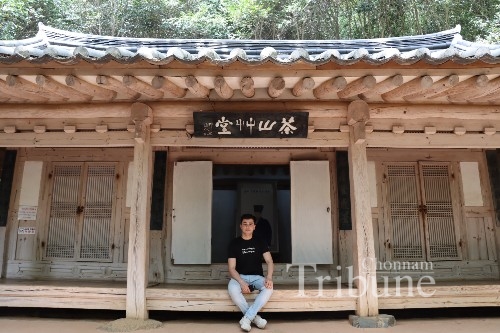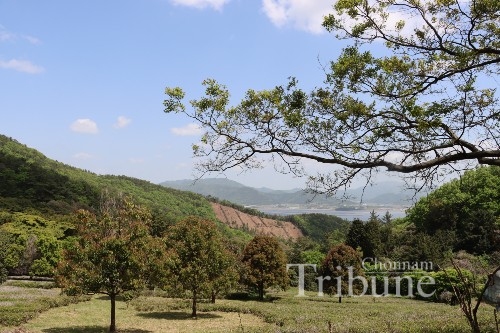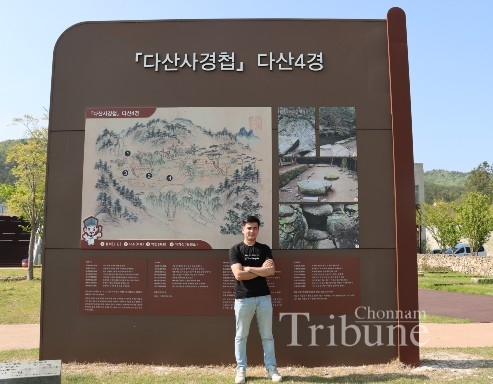
About two hours away from the Buk-gu campus of Chonnam National University to the South lies the village of Gangjin-gun. To be blunt, there is not much going on in this small agricultural county, except for the several dozens of local tourists flocking to the green embrace of the hills in the heart of the village. But these people are not only there for hiking, because the main theme of the trip is to pay homage to a 19th century Korean polymath – Jeong Yak-yong, who is better known by his pen name “Dasan” (Tea Mountain).
Born in 1862 into a family which came from a long line of courtiers, Dasan was a child prodigy, impressing his parents with his small collection of poems at the age of nine. Excelling through the higher civil service exams, he became known as a young intellectual and came to the attention of King Jeongjo in his early 20s. At the age of 27 Dasan took a high position in the Office of Royal Decrees, which alarmed the growing number of his political opponents. Besides philosophy, poetry and ethics, he was also interested in civil engineering, and is said to have introduced radical innovations in masonry. During his time in royal service, he designed and supervised several projects including the Hwaseong Fortress. But his political career would come to a quick end due to Palace intrigues following the abrupt death of the king in 1800. The following year he was exiled to Gangjin.

Dasan Chodang (Thatched House)
After two hours of riding the bus to the county, we, a Tribune reporter and I, took a cab from the town center, then we passed meadows and pastures and finally arrived at the side of the hills of a Tea Mountain on a breezy April mid-morning. The sky was clear, but the sun was only strong enough to give pleasant warmness at this time of the day. I found the entrance to the hill very representative of our hero; half a meter long stone walls at the sides and a small book kiosk. It was as if the entrance was saying: “Here lived a man who built walls and wrote books!”

After climbing through the silent woods of the hill for a while, we reached what was once the exile house of the philosopher – a three-room cottage with a cozy handmade pool supplied with the water running from the hills and a guest house. After being banished from Seoul, Dasan took up residence in this humble place and continued his studies as well as teaching the local youth on different disciplines. He is said to have written 500 volumes on various subjects during his time in exile. It was here he completed his famous work “Admonition on Governing the People” in which he outlines ways of better governance and responsibilities of local magistrates on providing social welfare in times of crisis.

Baekryeonsa Temple
Next to the guest house is a small yard overlooking the Gangjin Bay where he is believed to have spent hours deep in thought. We gazed into the surreal scene of the bay in an attempt to share the sentimental feelings of the philosopher, albeit for a short while. Then we continued climbing deeper up into the woods. Past the dreamlike green hills and an alluring camellia garden, we finally found ourselves at the gates of Baekryeonsa Temple. It was here Dasan met the Venerable Hyejang – the head of the temple who helped him move to the tea mountain area. Dasan and the monk became close friends and would spend hours together having long discussions on different subjects. We entered the rooms where those discourses would have taken place between the two. It felt as if we were inside a talking chamber, wanting to recount the conversations between the two wise men.

As the day drew to a close, we descended through the woods. As we were exhausted on the trip, I fell asleep on the way home. When I opened my eyes on the bus, we were already amidst the tall buildings of Gwangju. For a moment, it felt like I had come from not the village of Gangjin, but from the 19th century. Then I came to realize that it was one of the most enriching days I had ever had in Korea since I came here four years ago.
By Otabek Abdullaev, Senior, Dept. of Political Science and International Relations
Photo by Jo Beom-seo, Editor-in-chief

